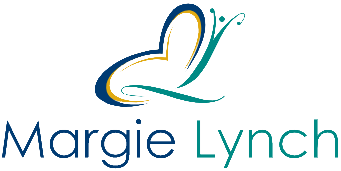Welcome back to The Leader’s Toolbox! Last week, we explored the concept of building an authentic leadership presence. This week, we tackle one of leadership’s most powerful yet underused tools: feedback that creates positive change.
The Tool Most Leaders Avoid
Here’s a startling reality: Most professionals receive meaningful feedback only during annual reviews, if at all. Yet research from the Center for Creative Leadership shows that regular, constructive feedback is the single most important factor in professional development.
Why do we avoid this powerful tool? Because most of us learned feedback skills from leaders who didn’t have them either. We’ve experienced feedback as criticism, judgment, or—worst of all—punishment delivered long after the behavior we could have changed.
The Feedback Paradox
During my HR executive years, I noticed something fascinating. The leaders who gave the best feedback were also the most successful at developing talent, building engagement, and achieving results. Yet they were also the leaders who struggled most with giving feedback initially.
They learned that feedback isn’t about fixing people—it’s about helping them grow. That shift in intention changes everything.
The Science of Effective Feedback
Traditional feedback often fails. When feedback focuses on fixed traits (“You’re not detail-oriented”), it creates defensiveness. When it focuses on specific behaviors and growth possibilities (“These three items need more precision—here’s how to strengthen them”), it creates learning.
Timing Matters: Feedback effectiveness decreases significantly when delayed. The sweet spot is within 24-48 hours of the observed behavior.
Ratio Reality: Effective feedback includes approximately five positive observations for every constructive suggestion. This isn’t about false praise—it’s about noticing genuine strengths while addressing growth areas.
Specificity Wins: Vague feedback like “Great job” or “This needs work” doesn’t create change. Specific feedback like “Your preparation for that client call was thorough—you anticipated their questions and had solutions ready” gives people a blueprint for success.
The SBI-I Framework for Growth-Oriented Feedback
The Center for Creative Leadership’s SBI model (Situation-Behavior-Impact) becomes even more powerful when you add a fourth element: Intent.
Situation: Describe the specific context. “In yesterday’s team meeting…”
Behavior: Explain what you observed without interpretation. “You interrupted Sarah twice when she was presenting her proposal…”
Impact: Share the effect you noticed. “I saw her become hesitant to continue sharing her ideas…”
Intent: Connect to growth and positive outcomes. “I know you want our team to feel heard and valued. What might help you channel your enthusiasm in ways that encourage others to contribute?”
Receiving Feedback: Your Growth Accelerator
How you receive feedback determines how much you’ll grow from it. Yet most of us have defensive reactions that block learning.
The Feedback Reception Toolkit
Listen First, Respond Later: Resist the urge to explain or defend immediately. Instead, ask clarifying questions: “Can you give me a specific example?” or “What would success look like in this area?”
Find the Growth Gold: Even poorly delivered feedback often contains valuable information. Look for patterns, especially if you’re hearing similar themes from multiple sources.
Separate Intent from Impact: Someone might deliver feedback clumsily, but their intention could still be to help you succeed. Focus on the growth opportunity rather than the delivery method.
The Gratitude Bridge: Thank people for feedback, even when it’s difficult to hear. This encourages future feedback and shows you value growth over comfort.
Difficult Conversations: The Leadership Accelerator
Leaders who can navigate difficult conversations with empathy and clarity build stronger, more trusting teams. These conversations aren’t just inevitable—they’re opportunities.
The Preparation Practice
Before difficult conversations:
- Clarify your positive intent (helping them succeed, improving team dynamics, achieving better results)
- Identify specific behaviors rather than personality traits
- Consider their perspective and potential stress factors
- Plan your opening statement to set a collaborative tone
The Conversation Structure
Open with Care: “I’ve noticed something I’d like to discuss because I want to support your success here.”
Share Observations: Use the SBI-I framework to describe what you’ve noticed without judgment.
Invite Dialogue: “What’s your perspective on this? Are there factors I might not be aware of?”
Problem-Solve Together: “What would help you succeed in this area? How can I support you?”
Close with Commitment: “Let’s plan to check in next week to see how things are going.”
From Avoidance to Advocacy: My Feedback Journey
Early in my management career, I avoided giving constructive feedback because I didn’t want to hurt people’s feelings. My sensitivity made me hyper-aware of others’ emotions, and I mistakenly thought protecting them from difficult conversations was kindness.
A mentor helped me see that avoiding feedback wasn’t protecting my team members—it was limiting their growth and, ultimately, hurting their careers. The kindest thing I could do was help them understand how to be more successful.
When I shifted from feedback as criticism to feedback as advocacy, everything changed. My team members began seeking me out for development conversations. They knew I was invested in their success.
The Feedback Culture Builder
One of my favorite books, James Clear’s atomic habits research shows that small, consistent feedback practices create significant culture change over time:
Start Small: Give one piece of specific, positive feedback daily for a week. Build the muscle of noticing and articulating what’s working.
Build Gradually: Add one constructive feedback conversation weekly, focusing on growth rather than correction.
Model Vulnerability: Ask for feedback on your own performance. “What’s one thing I could do to support the team better this week?”
Celebrate Growth: When people act on feedback, acknowledge their effort and improvement.
Your Feedback Action Plan
- Practice giving specific, positive feedback to three different people. Notice their responses.
- Ask for feedback from someone whose opinion you value. Practice listening without defending.
- Have one growth-oriented conversation using the SBI-I framework.
- Notice patterns in the feedback you receive and create a development plan for one area.
The Revolution Starts With You
The feedback revolution isn’t about changing how others give or receive feedback—it starts with your willingness to see feedback as a gift you give and receive for growth. When you approach feedback with genuine care for others’ success and openness to your own development, you model the kind of leadership that creates thriving teams and cultures.
What’s the best piece of feedback you’ve ever received? How did it change your approach or perspective? Share your story below—it might encourage another leader to embrace feedback as a growth tool.
Next Week: We’ll explore “The Decision-Making Framework” – tools for making better choices under pressure.

